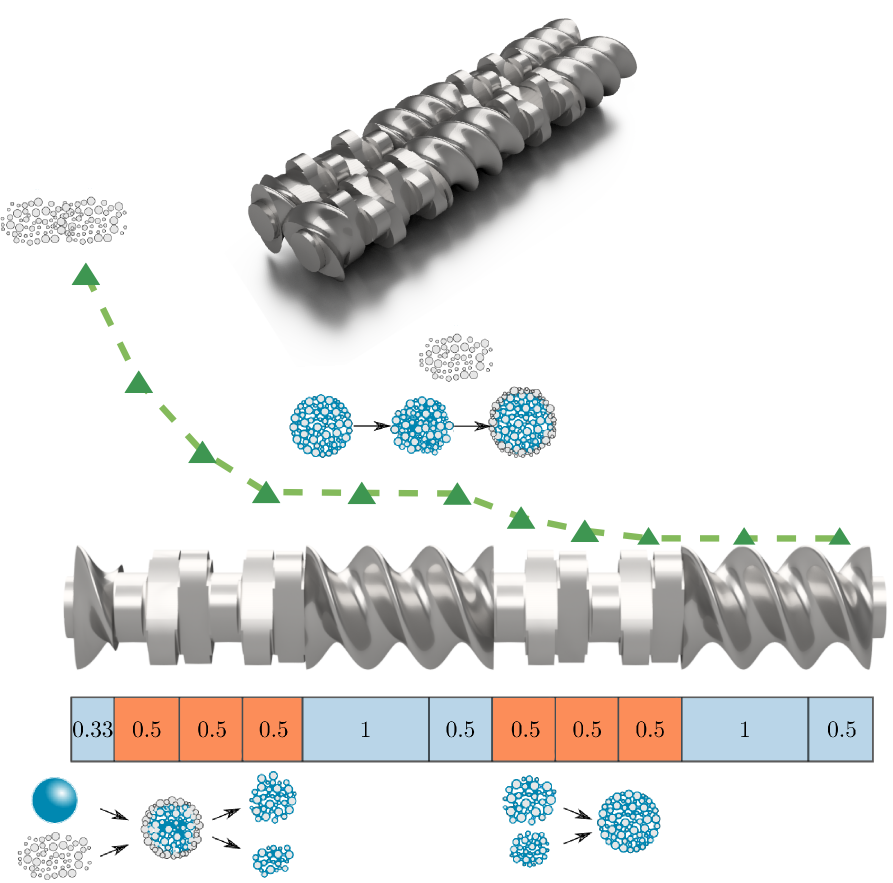Analysing the effect of screw configuration using a stochastic twin-screw granulation model
- Existing model extended to include novel layering mechanism.
- Novel compartment residence time model developed.
- New breakage model reflects screw element geometry effects.
- Model captures the liquid distributing/growth promoting effects of kneading elements.
 In this work, a framework for modelling twin-screw granulation processes with variable screw configurations using a high-dimensional stochastic population balance method is presented. A modular compartmental approach is presented and a method for estimating residence times for model compartments based on screw element geometry is introduced. The model includes particle mechanisms for nucleation, primary particle layering, coalescence, breakage, and consolidation. A new twin-screw breakage model is introduced, which takes into account the differing breakage dynamics between two types of screw element. Additionally, a new sub-model for the layering of primary particles onto larger agglomerates is presented. The resulting model is used to simulate a twin-screw system with a number of different screw configurations and the predictive power of the model is assessed through comparison with an existing experimental data set in the literature. For most of the screw configurations simulated, the model predicts the product particle size distribution at large particle sizes with a reasonable degree of accuracy. However, the model has a tendency to over-predict the amount of fines in the final product. Nevertheless, the model qualitatively captures the reduction in fines associated with an increase in the number of kneading elements, as observed experimentally. Based on model results, a number of key areas for future model development are identified and discussed.
In this work, a framework for modelling twin-screw granulation processes with variable screw configurations using a high-dimensional stochastic population balance method is presented. A modular compartmental approach is presented and a method for estimating residence times for model compartments based on screw element geometry is introduced. The model includes particle mechanisms for nucleation, primary particle layering, coalescence, breakage, and consolidation. A new twin-screw breakage model is introduced, which takes into account the differing breakage dynamics between two types of screw element. Additionally, a new sub-model for the layering of primary particles onto larger agglomerates is presented. The resulting model is used to simulate a twin-screw system with a number of different screw configurations and the predictive power of the model is assessed through comparison with an existing experimental data set in the literature. For most of the screw configurations simulated, the model predicts the product particle size distribution at large particle sizes with a reasonable degree of accuracy. However, the model has a tendency to over-predict the amount of fines in the final product. Nevertheless, the model qualitatively captures the reduction in fines associated with an increase in the number of kneading elements, as observed experimentally. Based on model results, a number of key areas for future model development are identified and discussed.
- This paper draws from preprint 195: Analysing the effect of screw configuration using a stochastic twin-screw granulation model
- Access the article at the publisher: DOI: 10.1016/j.ces.2019.03.078



